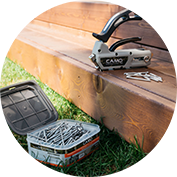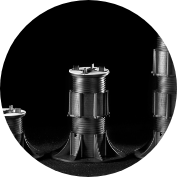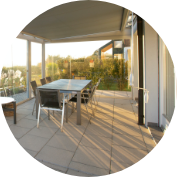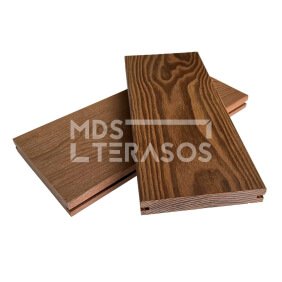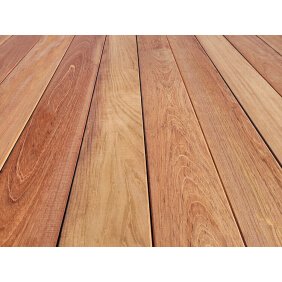Larch retains all the properties of high-quality wood over time, which is why larch boards are an extremely popular choice for installing terraces. Larch belongs to the coniferous category, but its unique texture differs from pine or spruce. Larch terrace boards are of high quality, durable, durable, hard and resistant to atmospheric changes. Due to these properties, owners of various objects are happy to choose a terrace made of larch boards.
Advantages
Siberian larch decking boards are much harder and more durable, and their moisture resistance properties are better than local or European wood. Larch is often chosen for long-term decking projects.
Quality class
Larch decking belongs to the AB quality class. It is a type of wood that meets high quality standards. Read more in the “Quality Description” section.
If quality is your priority, choose AB type boards for your terrace. This decision will pay off in the long term, as larch boards will require less effort to maintain.
AB type decking boards are a mixture of A and B type boards (ratio A – 70%, B – 30%).
Installation
The MDS terrace expert team recommends installing larch terrace boards using screw foundations, CAMO invisible fastening system A2 wood screws . For installation from above, choose Expandet or other types of stainless steel wood screws.
Maintenance
There is a myth that larch boards can be left unoiled – they will last “forever” anyway, or that the oil peels off the larch. The truth is that high-quality oil does not peel, and it is recommended to oil larch. Boards prepared in this way will be less brittle, and no knots will appear. The oil moisturizes the wood, so it cracks less, gives it color, and makes the appearance much more aesthetic – the boards do not turn gray. However, if you want an “aged wood” effect, cover the larch decking board with iron sulfate, called green stone, which immediately turns the wood gray-green.
 Hardwood decking board FAVA Amargosa 21x145x4600
44,69 € / pcs
Hardwood decking board FAVA Amargosa 21x145x4600
44,69 € / pcs
 CAMO Drive tool + bag
CAMO Drive tool + bag
 Prodeck Premium WPC decking boards
31,86 € – 60,35 € / pcs
Prodeck Premium WPC decking boards
31,86 € – 60,35 € / pcs
 Solid larch beam 50x100x6000
43,56 €
Solid larch beam 50x100x6000
43,56 €





